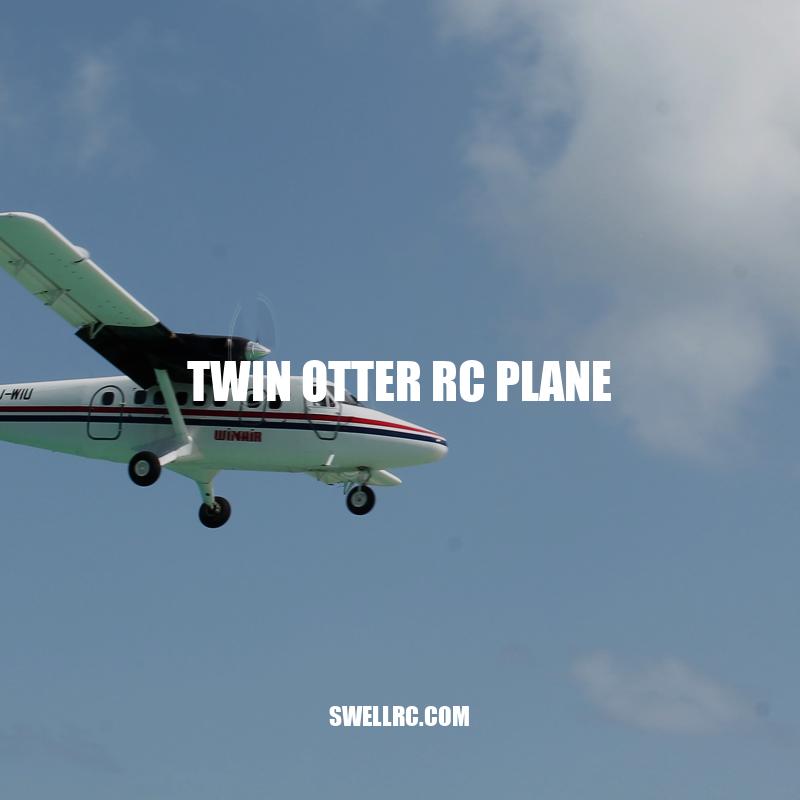Twin Otter RC Plane: Building, Flying and Tips
The Twin Otter RC plane is a popular scale model aircraft that has become increasingly popular among hobbyists and aviation enthusiasts. This model airplane is a miniature version of the Twin Otter aircraft, a light aircraft that was primarily used for passenger and freight transport. The Twin Otter was developed and produced by de Havilland Canada, with the first prototype aircraft flying in May 1965. The Twin Otter was widely renowned for its short takeoff and landing capabilities, reliability, and versatility, making it ideal for operation in remote and rugged locations. The Twin Otter plane was equipped with twin turboprop engines and was highly regarded for its ability to operate in a variety of weather conditions. The RC model of the aircraft has been designed with similar capabilities and offers enthusiasts an exciting and immersive experience. The Twin Otter allows pilots of all levels to perfect their flying skills and explore the world of model aircraft. The Twin Otter RC plane is meticulously detailed with a wingspan of approximately 1.4m, making it a scale replica of the original aircraft, albeit in miniature form. The model is constructed using lightweight materials, including balsa wood and foam, making it highly manoeuvrable and agile in the air.
The Twin Otter RC plane is built with a range of specifications and features to provide an optimal experience for pilots. Here are some of the design and features that make the Twin Otter RC plane one of the most popular model airplanes in the market:
- The model plane is built with a wingspan of 1.4 meters, making it a highly aerodynamic model aircraft
- The Twin Otter RC plane’s fuselage is meticulously designed using lightweight materials, including balsa wood and foam, making it highly manoeuvrable and agile
- The plane is usually fitted with a twin-turboprop propulsion system similar to the actual aircraft, providing it with ample power to take-off, climb, and perform various stunts in the air
- The plane comes in a ‘kit‘ form or an already built model that can be purchased from various online retail stores
- The latest Twin Otter RC planes have GPS and video cameras fitted within, to take recordings and provide live feeds of the aircraft
The Twin Otter RC plane has continued to evolve, with enhancements made to the model’s features, such as the remote-control capabilities, the materials used, and the model’s overall reliability and durability. Numerous online retailers offer a range of Twin Otter RC plans, accessories, and custom parts for DIY enthusiasts to create a unique Twin Otter RC plane to their specification. Online retailers provide a range of Twin Otter RC planes, accessories, and custom parts for DIY enthusiasts.
How many people can fit in a twin otter?
A twin otter can fit up to 19 passengers, depending on the configuration. However, some operators may choose to reduce the number of passengers to provide more comfort and legroom. For more information on twin otter specifications and configurations, visit websites such as Viking Air or de Havilland Aircraft of Canada.
Building a Twin Otter RC plane
Building a Twin Otter RC plane requires time, patience, and skill. The following are the general steps involved in building a Twin Otter RC plane:
- Research and purchase a plan or blueprint of the Twin Otter RC plane design
- Source quality materials such as balsa wood, polystyrene foam, glue, and electronics, including servos, ESC, motor, and receiver to build the plane
- Follow the plan carefully to assemble the various parts and components according to the instructions
- Install the flight power system, which includes the motor, ESC, battery, and propellers to power the plane
- Test all the components to ensure that they are working efficiently and without issues before the first flight
Building a Twin Otter RC plane requires precision and accuracy to achieve a functional plane that makes for a successful flight. New enthusiasts can tap into an online community of hobbyists and aviation enthusiasts who love to share tips and advice on how to construct and improve their RC planes. Websites such as HobbyKing and HorizonHobby offer tips and tricks that augment the building process.
Here is a table outlining the approximate costs of materials needed for building a Twin Otter RC plane:
| Material | Cost (in USD) |
|---|---|
| Balsa Wood Sheets | $40 – $100 |
| Polystyrene Foam Blocks | $20 – $50 |
| Electronic Speed Controllers (ESCs) | $30 – $80 |
| Brushless Motors | $40 – $100 |
| Propellers | $10 – $30 |
| Radio Receivers | $40 – $100 |
| Battery | $30 – $80 |
What do I need to build an RC plane?
To build an RC plane, you will need the following:
- Aircraft plans or a kit
- RC motor and battery
- Electronic speed controller (ESC)
- RC receiver
- RC transmitter
- Servos
- Control rods
- Foam or balsa wood for the plane’s body
- Adhesives like glue and tape
- Propeller
- Wheels or landing gear
- Tools like a hobby knife, scissors, pliers, screwdrivers, sandpaper, and a ruler
Some popular websites to buy RC plane parts and kits are HobbyKing, Horizon Hobby, and Tower Hobbies. Make sure to do your research before purchasing as the prices and quality may vary.
Flying the Twin Otter RC plane
Flying the Twin Otter RC plane can be a fun and challenging experience. Here are some tips to keep in mind before taking flight:
- Ensure that the weather conditions are optimal and that there is no wind or rain that could affect the flight
- Check that the radio control system and all the electronics are working properly before flight
- Check that the battery level is sufficient for the duration of your flight, and ensure that the battery is correctly installed and securely in place
- Plan your flight path and avoid crowded areas or tall obstacles such as trees, buildings, or power lines
- Start with simple maneuvers such as takeoff, climbing, and slowing down to ensure that you have control over the plane’s movements
- Practice flying in a large open space until you become more comfortable with the plane’s movements
Flying a Twin Otter RC plane can be an enjoyable experience for individuals who enjoy aviation or have a particular interest in model aircraft. Before flying, it is vital to understand the fundamental techniques and principles to ensure a successful and safe flight.
Individuals interested in flying a Twin Otter RC plane can visit websites such as RCGroups and FlyingGiants for additional information, tips and tricks, and support from the online community.
Remember, the most important thing when flying an RC plane is to have fun and fly safely. Take time to master the various skills and techniques to get the most out of your Twin Otter RC plane.
Conclusion
In conclusion, the Twin Otter RC plane is an exciting and rewarding model aircraft to build and fly. With its sleek design and versatile capabilities, it is an excellent representation of its full-sized counterpart. Individuals who enjoy aviation or have an interest in model aircraft construction and flying should consider trying the Twin Otter RC plane. The experience of building and flying a Twin Otter RC plane offers a sense of accomplishment, satisfaction, and joy that is hard to find elsewhere.
Not only is it an enjoyable hobby or pastime, but it can also be an excellent way to connect with like-minded individuals who share an interest in aviation and model aircraft. The online communities dedicated to RC aircraft provide an excellent forum to discuss building techniques, share experiences, and learn from more experienced pilots.
So why not start building and flying your very own Twin Otter RC plane today? With the wide range of resources available, including online tutorials, kits, and hobby shops, it is easier than ever to get started. Whether you are a skilled pilot or just starting, the unique thrill of flying a model aircraft like the Twin Otter RC plane will provide an unforgettable experience that you will cherish for years to come.



